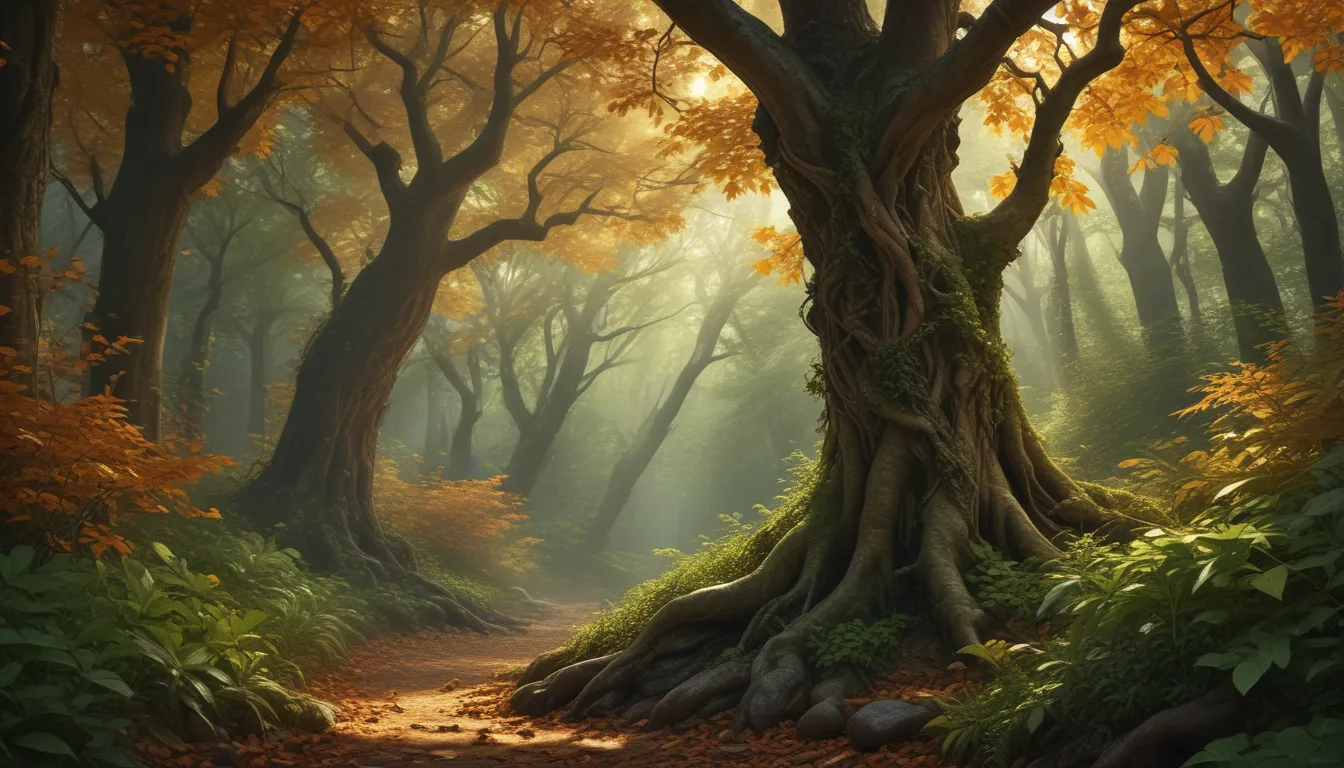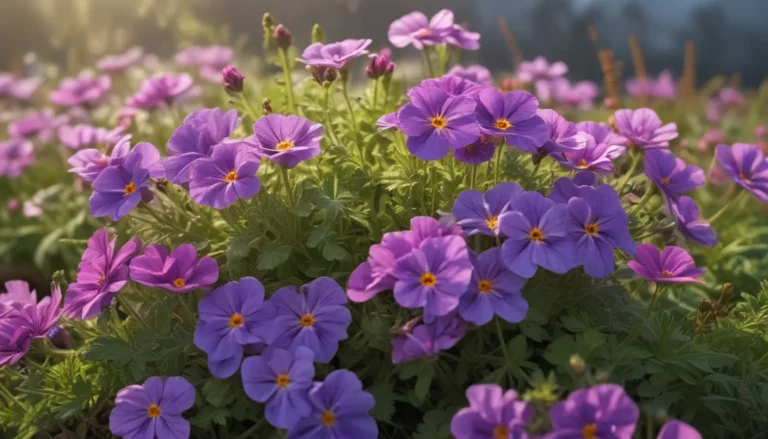The pictures we use in our articles might not show exactly what the words say. We choose these pictures to make you interested in reading more. The pictures work together with the words but don’t take their place. The words still tell you the important facts.
Welcome to the enchanting realm of leaves, where nature's green ambassadors shine bright with vitality and wonder. Often overlooked, these unassuming structures hold within them a trove of secrets waiting to be discovered. Join us on a breathtaking journey as we unravel 11 fascinating facts about leaves, illuminating their extraordinary characteristics, functions, and mesmerizing diversity.
Leaves: Illuminating Nature’s Splendor
Leaves are nature's solar panels, soaking in sunlight through the enchanting process of photosynthesis. The vibrant pigment chlorophyll, painting leaves with a lush green hue, cleverly harnesses light energy to alchemize carbon dioxide and water into life-sustaining glucose and oxygen. In this magical dance of transformation, plants thrive and bloom, gifting the world with precious oxygen that breathes life into the atmosphere.
Leaf Shapes: Nature’s Endless Symphony of Forms
Step into the wondrous world of leaf shapes, where nature's artistic flair knows no bounds. From the delicate lacework of fern fronds to the sturdy blades of banana leaves, each leaf design is a masterpiece of adaptation, crafted to fulfill a specific purpose. Whether maximizing sunlight absorption or minimizing water loss, leaf shapes showcase nature’s boundless creativity at play.
Fall Foliage: Nature’s Opulent Display of Colors
As autumn paints the world in hues of gold and crimson, leaves dazzle us with their spectacular artistry. The fading green of chlorophyll reveals a secret palette of carotenoids and anthocyanins, splashing trees with vibrant shades of red, orange, yellow, and purple. Nature's canvas comes alive with the changing seasons, a testament to its infinite beauty and ever-evolving splendor.
The Largest Leaf on Earth: Awe-Inspiring Giants of the Tropics
Prepare to be awestruck by the colossal wonders hidden within the tropical rainforests—the giant Amazon water lily. With leaves stretching up to 10 feet in diameter, these botanical behemoths can bear the weight of a small child. Witnessing these majestic aquatic giants serenely adrift on the water's surface is a spellbinding experience that will linger in your heart.
Leaf Movements: Ballet of Light and Life
Behold the graceful leaf movements of nature's dancers, adapting to bask in the sun’s warm embrace. The sensitive plant, responsive to touch, delicately folds its leaves inward when disturbed. Meanwhile, the sunflower elegantly tracks the sun's path throughout the day, a dance known as heliotropism, ensuring its leaves luxuriate in the sun's nourishing glow.
The Smallest Leaf: Miniature Marvels of Nature’s Abundance
While giants command attention, the tiniest leaf in the Wolffia genus deserves equal reverence. These minuscule aquatic plants boast leaves invisible to the naked eye, showcasing the incredible diversity and adaptability found in the plant kingdom. A whisper of nature's boundless creativity, these petite wonders captivate the imagination with their understated charm.
Leaf-Cutters: Guardians of Nature’s Gardens
Enter the realm of leaf-cutter ants, remarkable insects that practice leaf-modifying alchemy in tropical realms. Diligently snipping leaf fragments, these industrious ants ferry them to their nests, where the leaves serve as a fertile bed for cultivating fungus—their primary source of sustenance. Witnessing these miniature gardeners at work unveils the intricate web of life within ecosystems.
Medicinal Leaves: Nature’s Apothecary of Healing
For generations, leaves have been revered in traditional medicine for their potent healing properties. Plants like aloe vera, tea tree, and eucalyptus boast medicinal leaves rich in therapeutic benefits. Aloe vera's soothing gel and eucalyptus' aromatic leaves stand as testaments to nature's pharmacy, offering solace and healing for various ailments.
Edible Leaves: A Bounty of Gastronomic Delights
Celebrate the culinary delights of leaves, not just visually appealing but also nutritious. From the verdant abundance of spinach and kale to the aromatic allure of basil and mint, edible leaves enrich our palates with a treasure trove of vitamins, minerals, and antioxidants. Embrace these vibrant greens as allies in promoting holistic health and well-being through nourishing meals.
Leaf Camouflage: Mastery of Nature’s Disguises
Witness the artistry of leaf camouflage, where nature's disguises are unveiled in stunning splendor. The dead-leaf butterfly, with wings mirroring dried leaves, showcases exceptional mimicry against predators. These ingenious adaptations highlight nature's evolutionary prowess, a testament to the endless creativity woven into the fabric of life.
Leaf Messages: Nature’s Silent Whispers of Wisdom
Listen closely to the silent whispers of leaves, conveying tales of a plant's well-being and environmental interactions. Yellowing leaves may hint at nutrient deficiencies, while withered brown leaves signal drought stress. By attentively observing a plant's foliage, gardeners and botanists glean valuable insights into its health and vitality, unlocking a wealth of secrets held within each leaf.
Conclusion: Embracing the Enchantment of Leaves
In the tapestry of nature, leaves weave a spellbinding narrative of beauty, resilience, and wonder. From their role as nature's solar panels to their stunning array of adaptations, medicinal properties, and gastronomic delights, leaves enchant our senses and enrich our lives in myriad ways. Delve deeper into the captivating world of leaves, and let their hidden marvels inspire a newfound appreciation for the intricate tapestry of life that surrounds us.
Frequently Asked Questions (FAQs): Unveiling Nature’s Mysteries
Why do leaves change color in the fall?
During autumn, the breakdown of chlorophyll reveals pigments like carotenoids and anthocyanins, painting leaves in vibrant fall hues.
What is the purpose of leaf movements in plants?
Leaf movements, like those in the sensitive plant and sunflower, optimize sunlight exposure for photosynthesis, ensuring plant growth and vitality.
Which plant boasts the largest leaf in the world?
The giant Amazon water lily, with leaves up to 10 feet in diameter, claims the title of the largest leaf in the world, a majestic botanical wonder.
How do leaf-cutter ants utilize leaves?
Leaf-cutter ants use leaves to cultivate fungus in their nests, demonstrating their unique leaf-modifying behavior and symbiotic relationships in ecosystems.
Can leaves offer medicinal benefits?
Indeed, certain leaves like those of aloe vera, tea tree, and eucalyptus possess medicinal properties, harnessed for centuries in traditional medicine for their healing virtues.
Embark on a journey of discovery through the verdant world of leaves, where enchantment awaits in their hidden marvels, vibrant splendor, and invaluable contributions to the intricate tapestry of life.
We are committed to delivering engaging and reliable content, crafted with care and precision to inspire curiosity and learning. Each fact presented is a testament to our dedication to excellence, curated to enrich your understanding of the natural world and nurture a deeper connection with the wonders that surround us. Trust in our commitment to quality and authenticity as we explore the marvels of leaves together.






